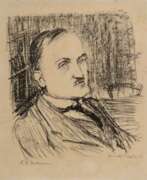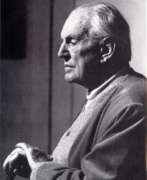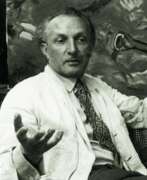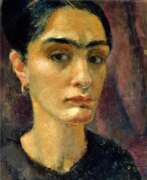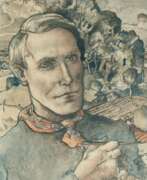Hamburg Secession
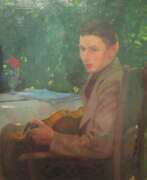

Friedrich Ahlers-Hestermann was a German painter and art writer from Hamburg. He was a member of the Hamburgische Künstlerclub of 1897, as well as of the Hamburg artist's workshop of 1832 and pupil of the Académie Matisse in Paris. After the First World War, he was a co-founder of the Hamburg Secession.
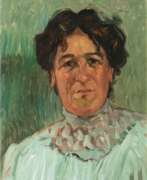

Alma del Banco was a German artist of the first half of the twentieth century of Jewish origin. She is known as a painter and graphic artist and is considered a representative of Art Nouveau.
Alma del Banco, who began her career as an artist rather late, was already a recognized figure of the Hamburg art scene in the early 1920s and one of the founders of the Hamburg Secession art group. At the beginning of her career she was strongly influenced by Cubism, then her artistic style changed, it became less schematic and her work became more meticulous. The artist achieved considerable success in the portrait genre. However, after the Nazis came to power in Germany, she was banned from exhibiting and her work was declared "degenerate art".
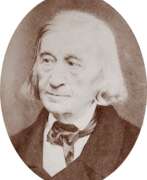

Willem Grimm was a German painter and graphic artist.
Already during his studies he made a name for himself, especially with his experimental graphics. After several guest exhibitions at the Hamburg Secession, he became an official member in 1929/30. In the early 1930s, at the age of 27, he was already one of Hamburg's most important artists.
In addition to classical genres such as portraits, landscapes and still lifes, Grimm worked from 1931 on the Rummelpott-Szenen motif, which in time became characteristic of his work.
The National Socialist repressions affected Willem Grimm less than many of his fellow artists. Still, in 1937 seven of Grimm's works were confiscated from the Kunsthalle Hamburg, the Hamburg Arts and Crafts Museum and the Nissenhaus Husum Museum as part of the "Degenerate Art" campaign and subsequently destroyed.
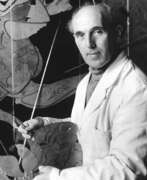

Eduard Caspar Hopf was a German classical modernist painter.
From 1915 to 1920 he studied jewellery making in his hometown. In 1923 he moved to Hamburg and began working as a free artist. A year later he had his first solo exhibition.
The Nazis regarded some of his works as "degenerate", and in 1937 three of his watercolours were ostentatiously confiscated from the Hamburg Museum of Art. However, in 1942 he was able to participate in the Great German Art Exhibition in Munich, and after a major air raid on Lübeck on 28/29 March 1942, he made some 100 chalk drawings of the ruined city on commission from the NSDAP.
After the end of the war, he taught at the Hamburg University of Fine Arts from 1947 to 1957. In the following period he created various frescoes and reliefs. In 1950 he joined the Hamburg Artists' Association.


Paul Kayser was a German painter and graphic artist. After training as a painter-decorator, Kayser attended the Schools of Applied Art in Munich and Dresden.
Paul Kayser was a founding member of the Hamburg Artists' Club 1897 and the Hamburg Secession, and a member of the Hamburg Artists' Association and the Altona Artists' Association. His style was decisively influenced by Albert Marquet, whom Kaiser met in 1909.
In 1937, Kaiser's still life was confiscated from the museum in Husum as part of the Nazi "Degenerate Art" campaign.
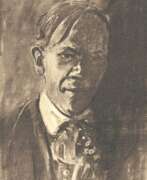

Karl Lorenz was a German expressionist painter and poet. In the 1920s he edited several expressionist journals and worked on publications with representatives of the Hamburg Secession. However, as an artist, he was self-taught.
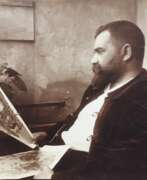

Emil Maetzel was a German architect, painter, graphic artist and sculptor.
In 1919, Maetzel was a co-founder of the Hamburg Secession, an organisation promoting modern art in northern Germany. He was also a member of the November Group, an association of expressionist artists in Berlin.
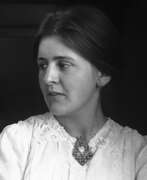

Dorothea Maetzel-Johannsen was a German modernist painter. She was a co-founder of the Hamburg Secession. Since 1919 she based her major expressionist works on the work of the dissolved Brücke (group of artists), early cubism and African sculpture.
Dorothea Maetzel-Johannsen has developed an individual mode of expression in Expressionism. Although her works feature the typical angular contours, two-dimensional concept of space and dynamic oblique compositions, unlike her peers, the artist refrained from any form of aggressiveness in her compositions. In her still life and figurative paintings, a contemplative mood resonates, contrary to the dynamic composition of the painting.
In 1937, Dorothea Maetzel-Johannsen's works were confiscated from the Kunsthalle Hamburg as part of the Nazi action "Degenerate Art" and then destroyed.
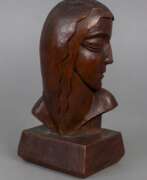

Karl Opfermann, a German sculptor and graphic artist born in 1891 in Rødding (now Denmark), carved a niche for himself in the realms of art and culture. His initial training as an ornament creator led him to the influential circles of Hamburg and Berlin, where he honed his artistic skills under the guidance of Heinz Wedding, Fritz Heit, and Richard Luksch. Opfermann's artistic journey was deeply intertwined with notable groups like the "Hamburgische Sezession" and the "Novembergruppe" in Berlin, where he played a pivotal role in shaping the local sculptural landscape from 1919 to 1933.
Tragically, Karl Opfermann's works became a target during the "Entartete Kunst" (Degenerate Art) action in 1937 by the Nazis, leading to their removal and destruction from German museums. A significant portion of his oeuvre was further lost in a bombing in 1943, which destroyed his studio in Hamburg. Despite these challenges, Opfermann's legacy persists, with efforts to reconstruct his life and works focusing on the years before 1943, the period before the destruction wrought by the Nazis and World War II.
Karl Opfermann's artistic expression was rooted in German Expressionism, a movement born out of resistance and reaction, emphasizing emotion and individual experience. His works, spanning various mediums including wood, stone, and ceramics, reflect a profound emotional depth and a unique exploration of human form and expression.
For collectors and experts in art and antiques, Karl Opfermann's work offers a compelling glimpse into the turbulent yet artistically rich period of early 20th-century Germany. His sculptures and graphic art, held in various collections throughout Germany, including Hamburg and Flensburg, stand as a testament to his enduring impact on German Expressionism.
To delve deeper into the world of Karl Opfermann and stay informed about new sales or auction events related to his work, consider signing up for updates. This subscription is an opportunity to explore and appreciate the profound legacy of this influential artist.
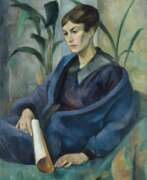

Aleksandra Andreevna Povorina (Russian: Александра Андреевна Поворина), married Ahlers-Hestermann, was a Russian and German modernist painter.
Aleksandra was born in the family of a St. Petersburg civil servant, in 1913 she went to Paris, where she studied at the Russian Academy of M. Vasilieva, joined the circle of artists of the Paris School, became interested in the art of Cézanne and Matisse. In Paris she met the artist from Hamburg Friedrich Ahlers-Hestermann (1883-1973), who became her husband. With the outbreak of World War I, the family moved to Hamburg.
Since 1915 the artist created semi-abstract paintings, participated in group exhibitions at the Commeter Gallery, was a member of the newly created Hamburg Secession with her husband. Under the influence of Paul Cézanne and Henri Matisse, she developed a spiritual-abstract art.
In 1934, the National Socialists who came to power in Germany banned Aleksandra and Friedrich any activity, and abstract paintings Povorina were recognized as degenerate. At that time the artist took up textile design, creating abstract patterns for fabrics, at the same time a series of black and white graphic ink drawings were created. During the war, many of the artist's works were destroyed.
After the end of World War II, Aleksandra took a teaching position at the Weissensee Higher Art School in Berlin, creating abstract collages. After her death, her daughter, textile, mosaic and glass artist Tatjana Ahlers-Hestermann, completed some of her works.


Otto Rodewald is a German painter and graphic designer.
Rodewald studied at the Hamburg State Art School and participated in exhibitions. Rodewald traveled extensively, mostly in Europe and the Middle East; between 1929 and 1931 he lived in the Tunisian artists' village of Sidi Bou Said, where he was captivated by Eastern exoticism. His style can be categorized as magical realism and new objectivity. He also painted portraits in the Neo-Saxon style.
Otto Rodewald later co-founded the art club Die Insel and from 1928, after participating in several exhibitions, became a permanent member of the Hamburg Secession and a member of the Hamburg Artists' Association.
During the National Socialists' campaign against degenerate art in 1933, some of Rodewald's works were banned, but in order to survive, the artist continued to work with Hitler's government, fulfilling their commissions. After the end of World War II, the artist remained active until his death.
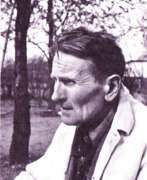

Heinrich Steinhagen, full name Heinrich August Friedrich Johannes Steinhagen, was a German painter, graphic artist and sculptor.
Heinrich began as a self-taught painter with paintings and miniatures in Impressionist and Expressionist styles. He also worked with elements of Cubism and Dadaism and eventually arrived at simplistic monumentality. Steinhagen was a co-founder of the Hamburg Secession and a member of the Hamburg Artists' Association. In 1937, Steinhagen, like many other artists, was persecuted during the Nazi campaign and spent several months in a concentration camp in 1944. This undermined his health and in 1948 he died of lung cancer.
Heinrich Steinhagen's creative legacy amounted to about a thousand works: oil paintings, pen and ink drawings, etchings, watercolors, woodcuts and sculptures in glazed clay, stone and wood.
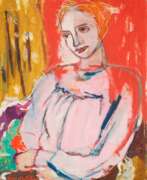

Else Weber-Rouwolf, born Else Rouwolf, was a German artist of expressive realism.
Else painted her first picture at the age of 30 and first exhibited in Hamburg in 1926. She became a participant of the Hamburg Secession, a member of the "Hamburg Society of Artists" and "Gedok", was friends with E. Hartmann and G. Volville. In 1929, the artist went to Paris for a year to study at the Academy Grande Chaumiere.
The main direction of Weber's work was portraiture - her models were artists, friends, husband and daughter, acquaintances and their children. Elsa also traveled extensively and painted landscapes. She survived the war, painted until she was ninety and died at the age of 100.
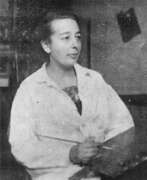

Gretchen Wohlwill was a painter and member of the Hamburg Secession. She was one of the German students at the Académie Matisse in Paris and developed a painting style influenced by French avant-garde art. In addition to painting, graphics were a focus of her work. Persecuted by the National Socialists because of her Jewish background, she emigrated to Portugal in 1940. After twelve years in exile, she returned to Hamburg in 1952.


